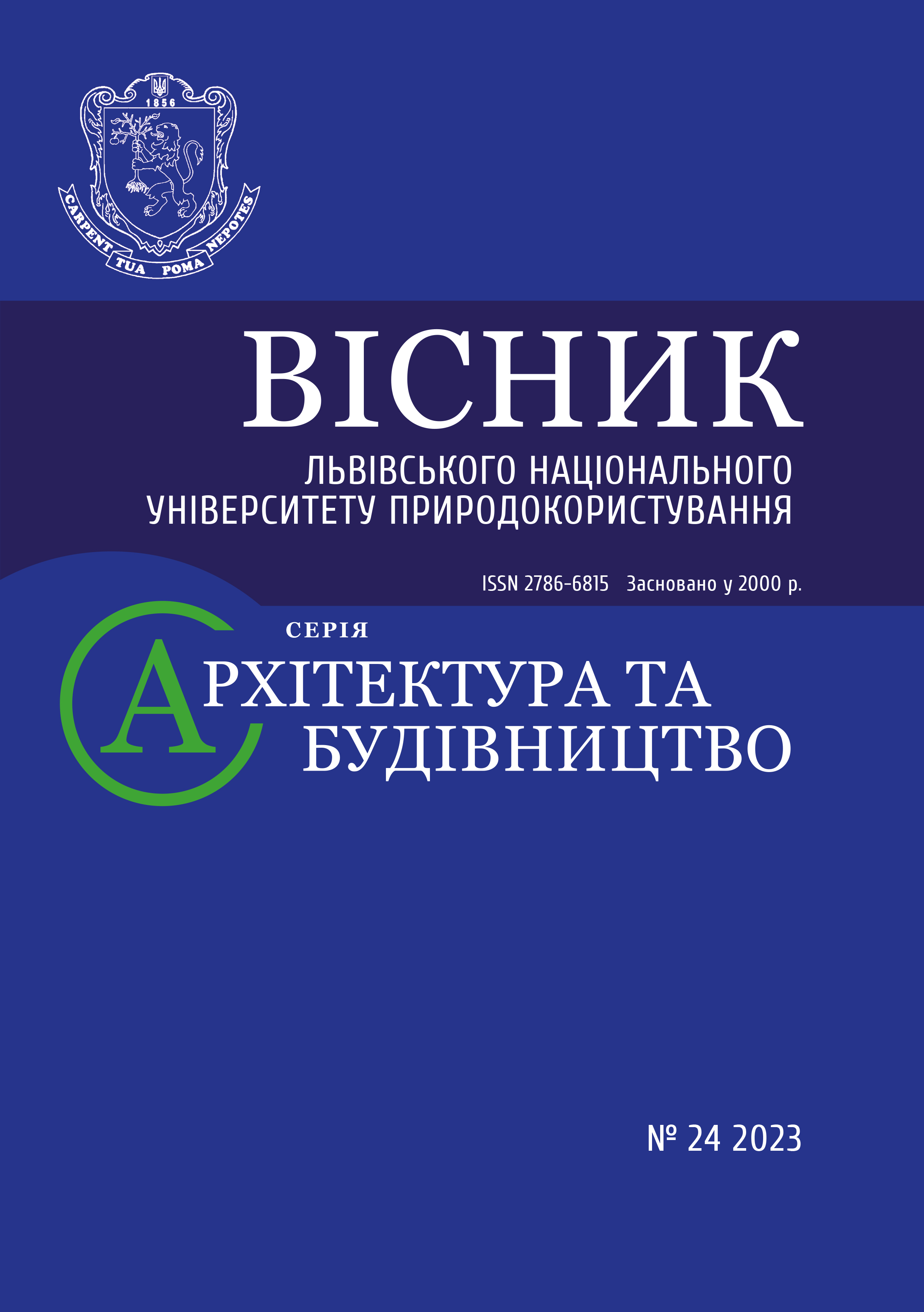TENSION IN COMPOSITES DURING HEATING
DOI:
https://doi.org/10.31734/architecture2023.24.015Keywords:
potential functions, transversally isotropic medium, imperfect contact, sphere, field of pressureAbstract
Spatial problems in the theory of elasticity often arise when solving various technical and technological problems in modern production. This is especially true when building composite materials and structural elements.
The behaviour of structural materials can be studied at three structural levels: macro-, micro-, and atomic level. In construction mechanics, the concept of continuous medium only has meaning at the micro level. The analysis of macrostresses significantly depends on the size of the structure itself, and consideration of the effect of material heterogeneity at this level.
When creating composite materials, the inclusions that appear in the matrix significantly affect the stress-strain state of the composite as a whole under various mechanical or thermal loads. The stress components can reach extreme values at the interface of phases in some cases due to the production technology, and in others, heterogeneity is introduced to improve the strength of the material.
The study of spatial problems of the static theory of elasticity and thermoelasticity for homogeneous isotropic and anisotropic bodies in the general formulation is associated with great mathematical difficulties due to the complexity of constructing a solution of a system of partial differential equations that satisfies the boundary conditions.
One effective method of solving problems of elasticity theory is the Fourier method. This method is based on the representation of general solutions of equilibrium equations through potential functions. The Fourier method uses different representations of the solution of the Lamé equations through harmonic functions, which allows the search for a solution in the form of series.
The paper discusses the problem of the distribution of thermal stresses in an unbounded transversely isotropic medium, which contains anisotropic inclusions in the form of a compressed spheroid with uniform heating, relative to mechanical and thermal properties.
The conducted studies show that with uniform heating of the medium, the stresses on the inclusion surface are local both along the X-axis and along the Z-axis. The tension concentration decreases rapidly when departing from the inclusion surface and approaches to zero value.
References
Bubniak T. I. Concentration of normal stresses in inclusion under the action of a linear temperature field. Bulletin of Lviv National Agrarian University: architecture and agricultural construction. 2018. No 19. P. 46–48.
Bubniak T. I. Stress distribution on the cavity surface in a transversely isotropic medium. Bulletin of Lviv National Agrarian University: architecture and agricultural construction. 2020. No 21. P. 5–9.
Bubniak T. I., Bubniak I. T. Stress growth in the vicinity of a spheroidal inclusion. Bulletin of Lviv State Agrarian University. Architecture and agricultural second-hand. 2007. No 8. P. 21–25.
Podylchuk Yu. N. Boundary problems of the statics of elastic bodies. Spatial problems of the theory of elasticity and plasticity: In 5 vols. Kyiv: Nauk. Dumka, 1984. Vol. 1. 303 p.
Sokolovskyi Ya.I., Bubniak T.I. Stressed state of transversal-isotropic medium with spheroidal inclusion at non-ideal mechanical contact. Theoretical and applied mechanics. 1995. Issue 25. P. 17–26.


